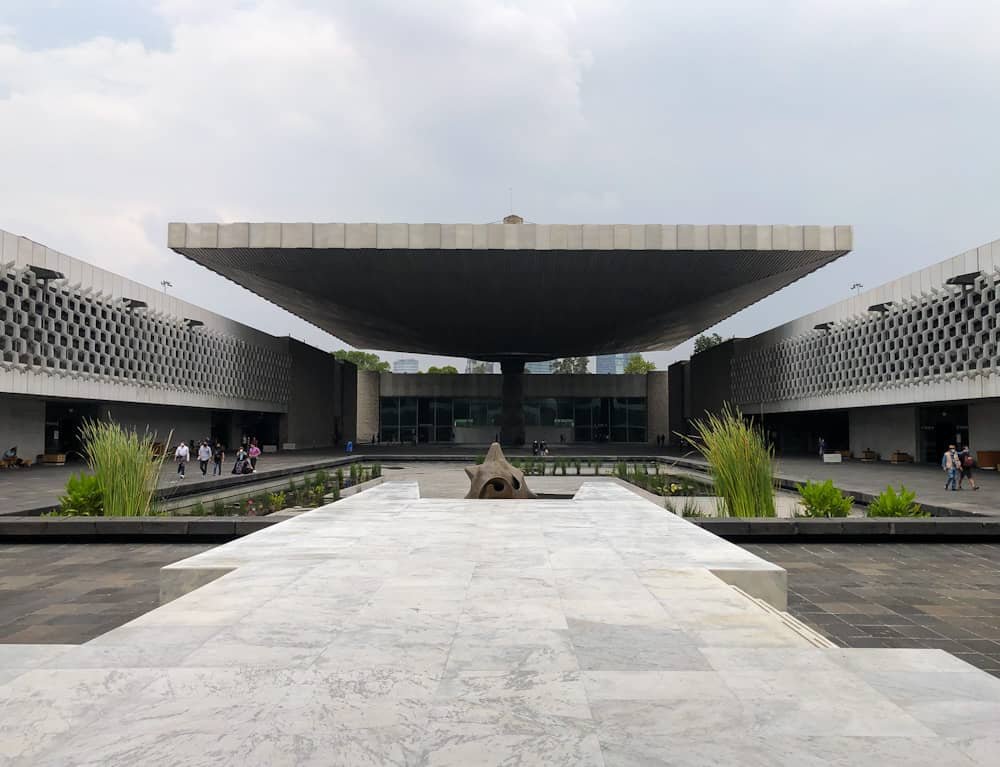Mexico City: Best things to do for 2 weeks in CDMX
Home to over 21 million residents, Mexico City is the 4th largest city in the world, and planning what to see and do during your time there can be quite intimidating.
That’s why we have created the ultimate guide on the best ways to spend 2 weeks in Mexico City.
Even the most ambitious traveller would struggle to tackle everything Mexico City has to offer in just 2 weeks - the city has over 180 recognised museums, so good luck trying to visit them all!
We have done our best to summarise the very best activities and places to see in Mexico City during your 2-week stay in the city.
Let’s explore Mexico City together.
Disclaimer - this blog post contains affiliate links where we can earn a commission if you make a purchase through them (at no extra cost to you).
Mexico City at a Glance
Language: Spanish
Currency: Mexican Peso
Population: 8-9 Million
Airport: Mexico City International Airport
Highlights: Zocalo; Xochimilco; Day-trip to Teotihuacan
Best Place to Stay: Galeria Plaza Reforma
Quick Mexico City Travel Tips
Don’t hail down taxis from the street. For the most part, it’s safer to use Uber when in Mexico City. For all the times when you can’t, be sure to use designated taxi stands like at the airport.
You have to try the street food. Honestly, even if you’re not a massive fan of spicy food, the street cuisine in Mexico City is truly delicious. Our favourite was the local Tamales with Salsa Verde.
Avoid drinking the tap water. Despite reports that the tap water in Mexico City is akin to the tap water in many parts of the US, it is best to avoid the tap water where you can. It’s always safer to stick to bottled water when abroad, but a better alternative is the LifeStraw.
(We once forgot this handy tip when travelling in South America - if you want to learn how not to end up in a Bolivian hospital, then you should remember to stick to bottled water)
It’s best to learn some Spanish before heading to CDMX. Between the two of us, we regrettably know absolutely no Spanish. Thankfully for us, one of our friends with whom we travelled to Mexico City was basically fluent, so he helped us navigate around. Without him, we certainly would have struggled, so it is best to learn some basic Spanish phrases for travel in Mexico before arriving there.
Unmissable Day-Tours from Mexico City
As you will be spending 2-weeks in Mexico City, it gives you plenty of time to see the city's highlights while also affording you the luxury of being able to explore a little further afield.
Here is a rundown of our top picks for day-tours from CDMX:
Best day tour for foodies: Night Tacos and Mezcal Tour
Best trip for nature lovers: Tolantongo Caves and Salt Pools
Once-in-a-lifetime adventure: Hot Air Balloon Ride over Teotihuacan
Best trip for history lovers: Teotihuacan, Tlatelolco and Basilica
Best Place to stay in Mexico City
Galeria Plaza Reforma
The Galeria Plaza Reforma is where we stayed during our 2 weeks in Mexico City and we have to say that it was such a good decision to stay there. Initially, we chose to stay at the Galeria Plaza Reforma as it was very close to the US Embassy - we were in Mexico City to get a visa - but we were surprised to find just how beautiful the area was when we arrived.
The hotel is frequently used by businessmen and women, so you know that it is going to be quiet and relaxing, and best of all, while they are working throughout the day, you will get the rooftop pool all to yourself!
From the Galeria Plaza Reforma, it is only a short 5-minute walk to the stunning Chapultepec Park (we’ll tell you more about the park shortly), and the Reforma area, where the hotel is found, is home to many bohemian bars, restaurants and cafes. Young professionals and tourists mix seamlessly in the area, giving the entire place a really cool vibe and atmosphere.
The Galeria Plaza Reforma (Photo from booking.com)
Best things to do during 2 weeks in Mexico City
Chapultepec Park
Chapultepec Park, more commonly referred to as Bosque de Chapultepec (Forest of Chapultepec), measures an astounding 686 hectares, making it one of the largest urban parks in the Western Hemisphere. Chapultepec is one of the best parks in Mexico City that you need to visit.
The park is often considered the ‘lungs of Mexico City, as the forest can replenish the oxygen levels for the entire valley of Mexico. Chapultepec means ‘Hill of the Grasshopper’ in Mexicano, an ancient pre-Aztec language, and on this hill, you shall find the Castillo de Chapultepec.
The park receives an estimated 15 million visitors a year, which prompted local authorities to undergo a major rehabilitation in 2005. This project helped to create an environment whereby tourists are able to weave their way through the Mexican City residents on their morning run through the park.
On top of the many museums in the park, Chapultepec is also home to a zoo and a very lively market on the Eastern edge. At the market, you will find hundreds of vendors flogging handmade crafts and local delicacies, as well as the usual tourist-centric souvenirs you come to expect from Latin American markets.
Note: Chapultepec Park is split into 3 unique areas, but the most popular area of the park and the one with the most things to do is certainly the First Section - the section furthest East, closest to the districts of Roma Norte and La Condesa.
Statues outside Castillo de Chapultepec - Chapultepec Park
Castillo De Chapultepec
The Castillo de Chapultepec, or Chapultepec Castle, is located in the park's centre on top of Chapultepec Hill. Offering unparalleled views of the city and surrounding mountains, visiting Chapultepec Castle is certainly one of the best things to do in Mexico City.
Originally built as the summer home of the highest colonial administrator, the ruler, Chapultepec Castle remained the official home of administrators, emperors and presidents until 1939, when President Lázaro Cárdenas turned it into a museum - a function it still serves to this day.
With entry for a mere 80 pesos (£3/$4) each, visiting Chapultepec Castle is an incredibly cheap and rewarding activity in Mexico City.
View from Castillo de Chapultepec
Note: All information at Chapultepec Castle is written in Spanish, with no direct translations available. If you are visiting and do not know Spanish, it may be worth researching the history of the castle before arriving, or potentially requesting an English-speaking guide to help you navigate your way around.
National Museum of Anthropology
The largest and most visited museum in Mexico, the Museum of Anthropology, contains a number of significant archaeological and anthropological artefacts that uniquely portray the country’s pre-Colombian heritage.
Established in 1964, the museum is one of the must-see attractions in Mexico City, giving you a fascinating insight into the history of the country and the Mexican people.
Entry tickets are the same as Chapultepec Castle at 80 Mexican pesos (£3/$4) each and grant you access to every available exhibit in the museum.
A word of warning: we visited the museum for a couple of hours and didn’t manage to cover even half of the exhibits on offer. The sheer size and depth of the museum is pretty incredible.
Note: As with the Chapultepec Castle, most signage and information is written in Spanish. Though there are a few English translations dotted around the museum you can pick up the main gist of each exhibit.
National Museum of Anthropology
Monumento a los Niños Héroes
Monument commemorating the Niños Héroes - six military cadets who were killed during the battle of Chapultepec in 1947, one of the last battles in the Mexican-American war.
The date of the battle of Chapultepec is now considered a national holiday in Mexico, to honour the sacrifice the military cadets made.
The monument itself contains six huge marble columns erected in a semicircle formation at the very Eastern edge of Chapultepec Park.
Monumento a los Niños Héroes
Chapultepec Zoo
In the Eastern section of Chapultepec Park, the Chapultepec Zoo is home to over 2000 animals from more than 200 species. It is one of 4 zoos near Mexico City, and as it was founded in 1923 by Mexican biologist Alfonso Luis Herrera, it is also the oldest.
While zoos, in general, are not something we typically go out of our way to see during our travels, Chapultepec Zoo is particularly notable and famed for its successful Giant Panda breeding programme. In fact, it was the first institution outside of China to breed Giant Pandas in captivity successfully.
As a free activity within Chapultepec Park, visiting the Chapultepec Zoo is certainly a great way to spend your morning. Grab a locally brewed Mexican coffee from one of the vendors dotted around the park, and wander leisurely through the exhibit. Be warned, though, the zoo has a one-way system in place, and it’s certainly bigger than we had been expecting.
How to visit Chapultepec Park?
As the park is so vast, there are several different ways you are able to visit Chapultepec.
The park is easy to get to if you take the metro - lines 1 and 7 have stations to the East and South of the park, respectively. On top of that, several different bus routes run up and down the Paseo de la Reforma, the major diagonal road that runs through the heart of the city and directly through Chapultepec Park.
If you’re staying in any of the La Condesa, Roma, Reforma or Polanco districts, then Chapultepec Park is never more than a 30-minute walk away.
If you’re staying further away, then we would recommend taking Uber. It’s no secret that Uber is one of the best apps to use when travelling, and never is this more apparent than in Mexico City. Yes, the traffic in Mexico City can be brutal at times, but Uber is still very handy and, ultimately, the safest way to travel.
Flower in Chapultepec Park
Zócalo
If you have ever seen the opening sequences of the James Bond film ‘Spectre’, you may be familiar with Zócalo. The common name for the central plaza in Mexico City’s Historic District, Zócalo, was the ceremonial centre of the Aztec city of Tenochtitlan before the colonial period.
In the very centre of Zócalo, you will find an enormous Mexican flag that is ceremoniously raised and lowered each day before being carried into the National Palace.
Among the many historic buildings and cathedrals located in the Zócalo plaza, you will also find many rooftop terraces and balconies where you can relax, grab yourself an ice-cold cerveza (beer), and watch the droves of visitors to CDMX below.
One of the main attractions at Zócalo is the beautiful Catedral Metropolitana, the Cathedral on the eastern edge of Zócalo that took over 250 years to be fully constructed. Inside (free entry), you will find a number of impressive organs, shrines and altars that make for fascinating viewing.
Catedral Metropolitana - Zócalo
How to visit Zócalo?
The Zócalo metro station is located on the North-eastern corner of the square, but try to remember where you got off the metro, as on the way back to the station there are no signs to indicate the presence of a metro station.
Zócalo is found in the heart of the Historic Centre of Mexico City and is within walking distance of many of the areas that visitors tend to stay in during their stay in the city. 1 hour walk from Roma Norte; 1 hour walk from Reforma; 1 hour 20 minute walk from La Condesa etc.
Alternatively, as with all aspects of Mexico City travel, it is safe and cost-effective to grab an uber to Zócalo.
Teotihuacan
In a country with the size and history of Mexico, it is no surprise that there are many important historical sites to visit. One such place is the fascinating Teotihuacan.
Less well-known than some of the famous archaeological sites within Latin America (Chichen Itza and Machu Picchu, etc.), Teotihuacan offers one of the most rich and rewarding experiences in Mexico, and certainly one of the best things to do in Mexico City.
Located 25 miles (40km) northeast of Mexico City, Teotihuacan was the largest city in the Pre-Columbian Americas and is perhaps best known for its architecturally significant Pyramids.
The Pyramid of the Moon (43m high) and the Pyramid of the Sun (65m high) are undeniably the highlights of any trip to Teotihuacan. The impressive structures, the latter double the height of Chichen Itza) can be seen from miles around, and climbing to the very top of the pyramids is an opportunity that should not be missed.
For a truly bucket-list experience, you can even try flying over Teotihuacan in a hot air balloon - as if this place could get any better.
Teotihuacan was granted UNESCO World Heritage status in 1987 and is consistently the most visited archaeological site in Mexico - any credible Mexico City itinerary must feature a trip to the famous site.
Teotihuacan Pyramid
How to visit Teotihuacan?
As with most of Mexico, the easiest way to get to Teotihuacan is via Uber. The 1-hour journey will cost somewhere in the region of £18-20 ($25-27) one-way. Upon arrival, you must also pay the 75 pesos entrance fee (£2/$3).
It is also possible to visit Teotihuacan via bus - this is an option that we didn’t explore, but we did find this useful article from The Whole World Or Nothing that details how to get to Teotihuacan from Mexico City.
While it is possible to visit Teotihuacan independently, we would highly recommend visiting with a guided tour from Mexico City. The Teotihuacan, Shrine of Guadalupe and Tlatelolco tour combines 3 of the best activities in Mexico City into one incredible day trip.
This was the tour we opted for when visiting Teotihuacan, and we thought it was brilliant. The guide was super knowledgeable, and we would not have enjoyed the ruins even half as much if we hadn't had him leading us around the site.
Teotihuacan - Pyramid of the Sun
Shrine of Guadalupe
The Basilica of Our Lady of Guadalupe, better known as the Shrine of Guadalupe, is a Roman Catholic church, basilica and national shrine of Mexico. The 1709 shrine was built next to the hill of Tepeyac, where the Virgin Mary is believed to have appeared to Saint Juan Diego.
Today, the Shrine of Guadalupe remains one of the most significant pilgrimage sites within Catholicism and is visited by several million people annually.
The site contains many plazas, churches and historical buildings, but the main attractions are the two basilicas themselves. The old basilica, built in 1709, housed Juan Diego’s cloak until 1974 when the modern basilica was created.
Shrine of Guadalupe - Modern Basilica
How to visit the Shrine of Guadalupe?
GetYourGuide offers a great Shrine of Guadalupe day-tour that offers the chance for guests to climb to the top of the famous Tepeyac hill. This tour is particularly suited to those who want to explore the basilicas in greater detail. Alternatively, combining a trip to the shrine with a visit to Teotihuacan is another great option.
Xochimilco
Located in the southeastern part of Mexico City, Xochimilco is best known for its canals, which are left from an extensive lake and canal system that connects most of the settlements of the valley of Mexico. Floating among the canals in Xochimilco are artificial islands called chinampas - rectangular areas of arable farmland traditionally used to grow crops.
Often described as the ‘Venice of Mexico’, Xochimilco is hugely popular with tourists who want to explore the famous canal network.
The most popular way to navigate around the canals of Xochimilco is to hop on board one of the colourful gondola-esque canal boats called trajineras. Locals often use the trajineras to commute around the area, but most boats will be brimming with tourists.
Whether you’re looking for a relaxing cruise down the canal or to dive right into the party culture of Mexico, Xochimilco is certainly one of the best things to do when visiting Mexico City.
Colourful Boats floating down Xochimilco
How to visit Xochimilco?
The easiest and most efficient way to visit Xochimilco is to book yourself a Xochimilco full-day tour. The tour combines the wonderful experience of floating down the canals of Xochimilco with the opportunity to explore the colonial district of Coyoacan.
It is also pretty simple to visit Xochimilco independently. As with anywhere in Mexico City, Uber is always a reliable option for making the 30km journey from the city to Xochimilco, but alternatively, you could use the metro.
Take the metro from the city to Tasqueña before hopping on the Tren Ligero line straight to Xochimilco. From the station, it is only a brief walk to Embarcadero Nuevo Nativitas, where the canal boats launch.
Tip: if you are going to choose the independent option, remember to factor in the cost of renting a boat for a few hours. The price will obviously vary but typically you will be looking in the region of 350 pesos (£12/$17) to hire the boat for 1 hour.
Plaza of 3 Cultures
Visiting the Plaza of 3 Cultures represents one of the best activities in Mexico City as it is a site where you are able to learn so much about the tumultuous ancient and recent history of CDMX.
As is the case with many major global sporting spectacles, the 1968 Mexican Olympics were not without controversy.
On the eve of the games, many Mexican students gathered in protest on the site of the Plaza of 3 cultures. What followed was a brutal massacre - official records suggest 44 demonstrators were killed on that fateful day, though some eyewitness accounts suggest the actual figure could range between 300-400.
To cover up the atrocity, the Mexican government immediately began plans to excavate the site. It happened to stumble upon several pre-Spanish pyramids that had been partially knocked down a few centuries previously.
It soon became clear that the Spanish settlers had knocked down the pyramids and built the church that stands adjacent to the plaza, with the rubble of the pyramids.
Today, the plaza represents 3 very different cultures - the pre-Columbian, the Spanish colonial, and the contemporary Mexican citizens.
Plaza of 3 Cultures - site of the 1968 atrocity
How to visit the Plaza of 3 Cultures?
Visiting the plaza of 3 cultures is typically combined with a number of other activities within the vicinity of Mexico City. For example, a tour of Teotihuacan and Basilica Guadalupe will stop off at the plaza of 3 cultures.
The plaza itself is located 5km north of the popular Zona Rosa and is easily accessible by uber. You can also jump on board the metro and arrive directly at the Tlatelolco station, just across from the plaza itself.
Alternative Day-trips available from Mexico City
Cacahuamilpa Caves - explore the second-largest cave network in the world before learning about the area’s renowned silver mining industry.
Coyoacan and Frida Kahlo Museum - stroll around the colonial district of Coyoacan before visiting Frida Kahlo’s famous Blue House on this full-day tour.
Tolantongo Salt Pools - one of the most Instagrammable places in Mexico is certainly worth the 4-5 hour bus journey from Mexico City.
Puebla and Chalupa - visit the largest pyramid of the new world before admiring the colours of the charming city of Puebla.
Best Areas to Stay in Mexico City
During our 2-week stay in Mexico City, we stayed in the Juarez district. 9 of us shared 3-rooms at the Galeria Plaza Reforma, and it was brilliant. We felt safe, we were close to lots of restaurants and bars, and the pool on the roof was a real plus.
Initially, we chose the area due to its proximity to the US Embassy (we were in CDMX to pick up a visa), but it turned out to be a great area for a number of different reasons.
The district is within walking distance of Chapultepec Park, which is where we spent most of our mornings. Similarly, the district is home to the Reforma Zona-Rosa area - a friendly, bohemian neighbourhood where many young professionals and tourists can be found.
Roma Norte District
If you are planning to spend 2-weeks in Mexico City, then it may be worth moving around the city to get a good feel of the different neighbourhoods. Some of the best areas to stay in Mexico City for every budget are listed below:
Centro Historico - arguably the most famous district in CDMX, the Centro Historico is home to the Zocalo, plenty of affordable accommodation options and many examples of great colonial architecture.
Polanco - an affluent neighbourhood in the Miguel Hidalgo borough of Mexico City. Often referred to as the ‘Beverly Hills of Mexico’, Polanco is littered with high-end hotels and upscale restaurants. As you can imagine, this makes Polanco one of the safest areas to stay in Mexico City, but you will have to pay well for the privilege.
Roma - one of the coolest neighbourhoods in CDMX, Roma (split into Roma Norte and Roma Sur) is a hipster’s paradise, with a number of mini-parks, bars and coffee shops populating the streets.
Condesa - the area is perhaps best known for its tree-lined roads. Beneath the canopy, at street level, you will find a quiet, relaxing atmosphere, somewhat of a rarity in a city the size of CDMX. If you plan to visit Mexico City with a toddler or baby, Condesa is certainly one of the best and safest areas to stay.
San Miguel Chapultepec - perhaps not the first district that many would choose in Mexico City, but with its proximity to the neighbouring Chapultepec Park, the area’s budget accommodation options are certainly worth considering.
CDMX Sign in Zócalo (Centro Historico)
That concludes our list of the best things to do for 2 weeks in Mexico City.
CDMX is a destination that would take many years to discover fully, and even those that have lived there all of their lives have only managed to scratch the surface, but we hope our 2-week CDMX guide helps you to get a general flavour of the Western Hemisphere’s largest city.


















